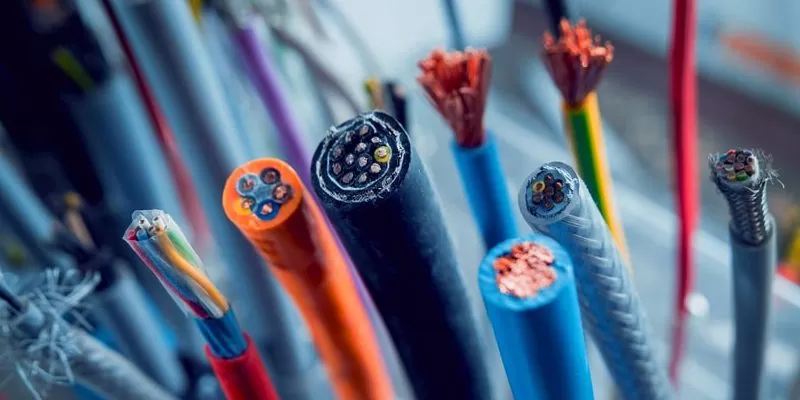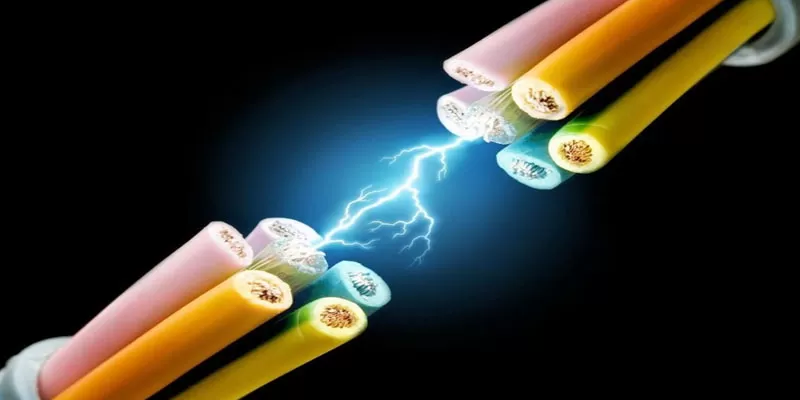The power cable VVGng (vinyl-vinyl “bare” non-combustible) is designed to transmit direct current with voltage up to 1000 V or alternating current with voltage from 660 V to 1000 V. It consists of several copper conductors with vinyl insulation and a vinyl sheath (cambric), devoid of armor .
This cable product is used for the distribution of electricity in stationary installations. Moreover, it exists in two versions — VVGng and VVGng-ls. They differ not only in the degree of resistance to flame, but also in some features of the work.
Both options are made with current-carrying single-wire copper conductors (aluminum versions also exist, but have a different marking — the letter “A” is present in their name). Technical and quality characteristics of cable products are regulated by GOST 31996–2012.
These types are recommended for use in rooms and places where there is a high risk of fire. For laying conventional current-carrying routes in non-combustible materials, their use may be redundant, although it all depends on the characteristics and features of the location.
Characteristics of the power cable VVGng

The VVGng power cable is used in the following cases:
-
Laying of cable routes in economic territories. In residential areas, it is acceptable for use, but it is not so widespread;
-
Placement in appropriate trays;
-
Laying current-carrying tracks outside buildings, but not in the open.
Due to the non-combustible properties of the cambric shell, it can ignite under the influence of open fire, but at the same time it will not allow the flame to spread further along the route. Important! When ignited, the braid of wires of the VVGng series emits a fairly large amount of smoke and corrosive gases — and that is why it is not recommended to use it in residential premises.
It is produced mainly in two versions — four-core and five-core. In the first case, its cross section is 90 mm2in the second — 120 mm2. Solutions with a different number of cores also exist, but are not very widespread.
Installation is allowed at temperatures from ‑15 degrees Celsius. When forming a beam gasket under extreme temperatures, it is necessary to place special heating equipment for the current-carrying line every 100–150 meters.
Characteristics of the power cable VVGng-LS

Power cable with low smoke emission VVGng-LS (“LS” stands for low smoke) is used for laying routes in residential premises. Unlike its predecessor, when ignited, its cambric emits extremely little smoke and corrosive gases. This is the reason for the scope of this cable.
For reduced smoke emission, there is an additional layer of chalk-filled rubber under the cambric shell. However, options with vinyl filling are also present. In both cases, the cambric is made from special polymers that differ from those in the predecessor.
Also, the difference lies in the cross section. Four-core VVGng-LS has a cross section of 70mm2and five-core — 185 mm2. There are single-wire, two-wire, and three-wire configurations, but they are not very common. In all cases, the current-carrying core is single-wire.
In addition, the installation of VVGng-LS is allowed at temperatures from ‑25 degrees Celsius. But, just like its predecessor, when laying a beam in frosty conditions, the line must be heated every 100–150 meters with special equipment.
It is also worth noting the existence of VVG-FRLS cable products. In fact, this is the same as this subspecies, but it is simply labeled differently. FR in this abbreviation stands for Fire Resistance, that is, “fire resistant” — in principle, the same as “non-combustible”.
There are also special versions — HL, supporting operation at temperatures from ‑60 degrees Celsius; and T, which is resistant to the harmful action of molds.
Conclusion
The conclusion is obvious. VVGng can be used for laying power lines in utility and technical premises, as well as outside them. VVGng-LS, in turn, is used in residential, office premises and common areas.

Добавить комментарий
Для отправки комментария вам необходимо авторизоваться.